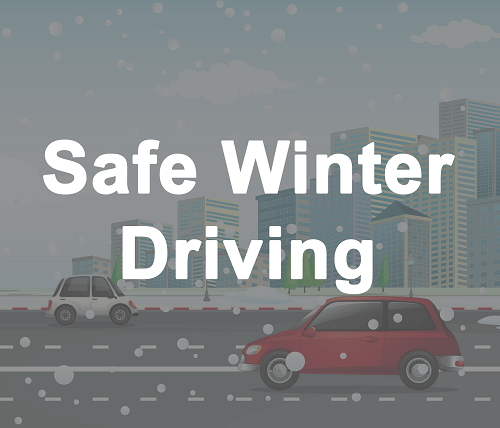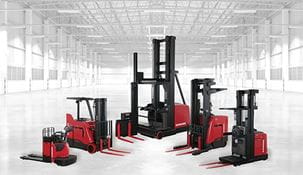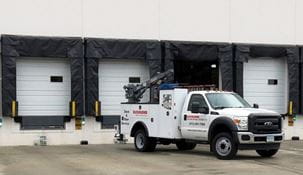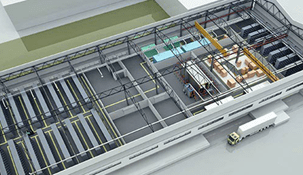Safe Winter Driving
Safe Winter Driving
-

The first winter storm of the year brings an increase in the number of road accidents as people re-adjust to winter driving conditions. Every year winter driving changes the rules of the road for an entire season, and every year it is important to get your vehicle ready for the snow and ice and change a few driving habits to ensure your safety. Winter driving is the most difficult driving season.
Here are 10 safety tips that can help prevent an accident while driving on snow and ice:
- Get a grip. Tire traction is critical. Prior to driving on snow and ice check your tires for tread. To have adequate snow traction, a tire requires at least 6/32-inch deep tread.
- Make sure you can see. Replace windshield wiper blades. Clean the inside of your windows thoroughly. Make sure your windshield washer system works and is full of an anti-icing fluid.
- Run the defroster. In order to remove condensation and frost from the interior of windows, engage your defroster. It is critical during snowy and icy weather that the windshield remains warm. It not only helps inside the car but can help to prevent build up on the outside of the windshield.
- Check your lights. Use your headlights so that others will see you. It is important to ensure that your headlights and taillights are clear of snow.
- Give yourself a brake. Utilizing your brakes properly on snow and ice can be the difference between sliding out of control and maintaining a safe position on the road. It is sudden stops and applying the brakes unnecessarily that can lead to loss of control of your vehicle.
- Watch carefully for "black ice". If the road looks slick, it probably is. This is especially true with one of winter's worst hazards: "black ice." Also called "glare ice," this is nearly transparent ice that often looks like a harmless puddle or is overlooked entirely.
- Remember the tough spots. Recognizing where roads can become slick and icy can be half the battle. Bridges and overpasses are common places that will freeze first. When encountering bridges and overpasses it is important to keep acceleration and braking to a minimum.
- Control your steering. Once your tires lose traction on the road and you are working to regain control of your vehicle, steering becomes an integral part of keeping your vehicle safely on the road. It is very important during a skid to steer the vehicle back to your desired direction.
- Control your speeds. Operating a motor vehicle at a safe speed during snow and icy conditions is the one thing that we all can do to avoid most hazardous situations. It is important to remember to slow down to the level of the conditions of the road and brake early.
- Technology and the size of the vehicle offers no miracles. Many drivers think that large trucks and SUVs offer a higher level of protection than smaller vehicles. The fact of the matter is, large trucks and SUVs are equally as vulnerable as other vehicles on snow and ice and could end up in the same ditch as a sedan.
Regardless of your driving skill or vehicle preparation, caution and respect for the conditions are key to avoiding an accident. These tips may help prevent snowy and icy roads from ruining your day.
Contact Us
For more information about partnering with Raymond Storage Concepts and how we can satisfy your parts needs, please contact us today.
You May Also Like:

Raymond Forklifts
Raymond manufactures innovative electric lift trucks that deliver a lower total cost of ownership.
Learn More

Dock & Door Equipment
Reduce energy consumption, increase worker productivity and safety with our loading docks and commercial doors.
Learn More

Engineered Solutions
After working with you to understand your specific needs, we evaluate potential solutions to determine which best meets your operational and financial requirements.
Learn More

Fleet Maintenance Management Software | iTRACK | Raymond
Understand and manage fleet and asset maintenance data and costs with iTRACK.
Learn More


